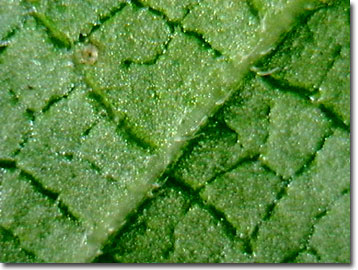Reflected Light Gallery
Lantana (Lantana camara)
A native to the Caribbean region, Lantana camara is so well established in Florida that a city is named after it and most "crackers" mistake it as a native of the Sunshine State. This tough evergreen shrub of the Tropics features beautiful flowers, which is loved by butterflies, but cursed by an unpleasant odor .

Lantana prefers well-drained soil and is drought resistant, but flourishes in moist, hot air. Whether propagated by seed or cuttings, this showy flowering plant is considered to be a weed by some and a desirable garden flower by others. The rough stems and leaves of this tough competitor are covered with hairs. The aroma described by some as smelling like cat urine may repel potential herbivores such as deer and rabbits, but seems not to bother pollinating butterflies, which feast on its pollen and nectar. Tolerant of salt spray, this plant has been used for beach plant stabilization of disturbed sand dunes to the delight of erosion experts and the distress of botanists fond of native vegetation.
As a non-native representative of the Family Verbenaceae (includes the verbenas), L. camara also grows in Texas, Louisiana, Alabama, and Mississippi. Although featured in flower gardens, when wild, lantana can reach 6 feet in height and 8 feet across. The flowers are in dense clusters up to two inches across and feature a wide variety of colors and combinations including bright yellows, oranges, reds, white, pinks, and purples. The flower clusters can change color over the long growing season and often different colored flower bunches occur simultaneously on the same shrub. The serrated leaves are aromatic when crushed and the stem is square and woody. Following the flowering season, berry fruits or fleshy drupes form in the fall. Each fruit, turning from green to black with ripeness, contains one seed and if ingested, is poisonous. Known also as the shrub verbena, lantana also goes by the moniker of the hummingbird flower. There are numerous varieties in horticulture in addition to the wild, naturalized varieties.
Contributing Authors
Cynthia D. Kelly, Thomas J. Fellers and Michael W. Davidson - National High Magnetic Field Laboratory, 1800 East Paul Dirac Dr., The Florida State University, Tallahassee, Florida, 32310.
BACK TO THE REFLECTED LIGHT IMAGE GALLERY
BACK TO THE DIGITAL IMAGE GALLERIES
Questions or comments? Send us an email.
© 1995-2025 by Michael W. Davidson and The Florida State University. All Rights Reserved. No images, graphics, software, scripts, or applets may be reproduced or used in any manner without permission from the copyright holders. Use of this website means you agree to all of the Legal Terms and Conditions set forth by the owners.
This website is maintained by our
Graphics & Web Programming Team
in collaboration with Optical Microscopy at the
National High Magnetic Field Laboratory.
Last Modification Friday, Nov 13, 2015 at 01:19 PM
Access Count Since September 17, 2002: 10673
Visit the website of our partner in introductory microscopy education:
|
|
